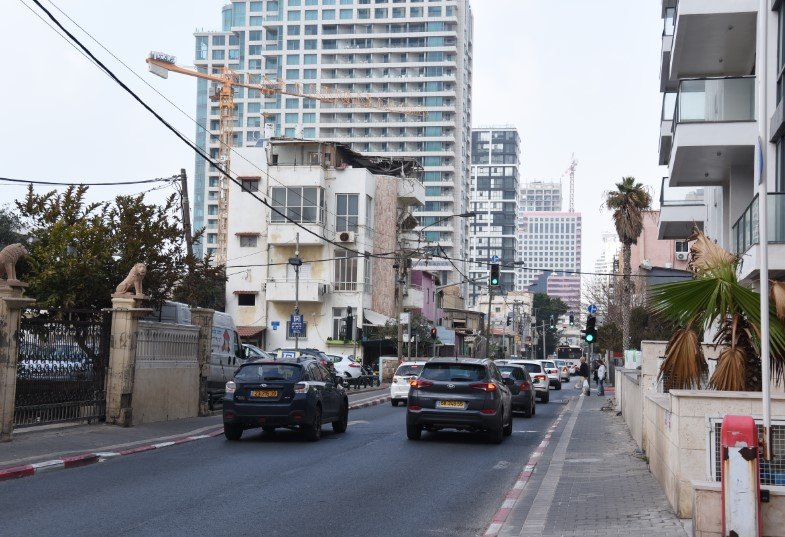Luxury buyers are shelling out over NIS 150,000 per square meter—and not even blinking
Tel Aviv real estate isn’t exactly known for bargains, but even seasoned property watchers are raising eyebrows. Hayarkon Street, long a beachfront staple, is now clocking in at nearly 60% more expensive than new listings near the revamped Sde Dov area. And yet, buyers keep coming.
In the shadow of cranes and sea breezes, apartments in Hayarkon’s top-tier buildings are quietly fetching over NIS 150,000 per square meter—some even higher. The numbers, to put it mildly, are jolting.
Where the Price Madness Begins
It wasn’t always like this. A few years ago, Hayarkon wasn’t the crown jewel. Sure, it had location—right on the water—but it didn’t scream “international billionaire playground” quite the way it does now.
Fast forward to April 2025. A two-room apartment on the seventh floor of the Mandarin Oriental project at 2 Hayarkon Street—yes, just opposite the old Dolphinarium—was sold for a stunning NIS 9.79 million. That’s for 79 square meters. Simple math? That’s NIS 123,924 per square meter.
Another one, just a few doors down at 7 Hayarkon, was snatched up in February for NIS 6.67 million—for only 53 square meters. Do the division: NIS 125,759 per square meter. Still not the highest. Go back a few months to October 2024, and another unit in the same Mandarin complex sold for a mind-bending NIS 132,475 per square meter.
That’s not top-end penthouses. These are relatively modest-sized apartments.

What’s Driving These Insane Numbers?
Honestly? It’s a mix of psychology, scarcity, and branding.
There’s a belief—especially among wealthy foreign buyers—that Tel Aviv beachfront is the new Monte Carlo, just with better tech and shakshuka. Hayarkon Street is first-line sea, and that “unobstructed view” cliché? Here, it’s the real deal.
• The Mandarin Oriental brand matters. Buyers aren’t just purchasing space—they’re buying into luxury, concierge services, hotel-style amenities, and security.
• Foreign investment is back. With conflict tensions easing slightly post-April ceasefire, wealthy Jewish diaspora buyers from the US, France, and the UK have returned—some buying blind from overseas.
• “Hayarkon is legacy real estate,” says a prominent Tel Aviv realtor. “It’s where people park money long-term. No one’s flipping these places. They’re holding them like art.”
Sde Dov’s Big Promise vs Hayarkon’s Big Delivery
Now let’s talk comparison. Everyone had eyes on Sde Dov, the redeveloped airport space in north Tel Aviv, as the city’s next mega-luxury zone. Wide beaches, sleek urban planning, lots of hype.
But here’s the catch: Sde Dov is mostly off-plan. It’s glossy brochures, pretty renderings, and dust. Hayarkon, by contrast, is move-in ready, with established infrastructure, actual restaurants downstairs, and—you guessed it—views today, not tomorrow.
Just look at the gap:
| Location | Avg. Price Per Sq. Meter | Sample Sale Price (Apartment) | Year |
|---|---|---|---|
| Hayarkon Street | NIS 125,000–150,000+ | NIS 13.38M for 101 sqm | 2024 |
| Sde Dov Area | NIS 80,000–95,000 | NIS 7.8M for 88 sqm (planned) | 2025 |
That’s a 60% jump in favor of Hayarkon. And while Sde Dov may catch up once completed, it still lacks the cachet—and sea mist—that Hayarkon offers right now.
What’s Selling—and Who’s Buying?
It’s not the Tel Aviv middle class, that’s for sure.
Most buyers in Hayarkon’s high-end developments are either foreign nationals, international investors, or wealthy Israelis with significant offshore income. A good chunk are dual citizens, using Israeli passports to simplify transactions.
One sentence, but it hits hard: locals are being priced out—again.
The apartments being scooped up are typically 2–4 room units, often between 60 and 130 square meters. Some are second homes. Some are Airbnb conversion bets. Others? Just somewhere to park excess cash in a volatile world.
Brokers Smell Blood—and Opportunity
Realtors say demand is so strong, some units don’t even make it online.
One top-tier agent, who asked not to be named, said her office sold three units in the same Hayarkon building in under 48 hours—all to overseas buyers. No virtual tours. No negotiations. Just WhatsApp photos and a wire transfer.
Another broker joked, “Selling here is easier than selling iPhones in Ramat Aviv Mall.”
And prices may still rise. A new batch of units is hitting the market in early August, and early whispers suggest asking prices north of NIS 160,000 per square meter.
So Is Hayarkon in a Bubble?
It’s tempting to say yes. But some analysts think otherwise.
“Hayarkon is Tel Aviv’s Rothschild Boulevard of beachfront,” says Rafi Nadav, a property market consultant. “We’re seeing generational wealth move in. These buyers aren’t price-sensitive. They’re longevity-sensitive.”
And with only so many buildings literally facing the water—and city zoning limiting height and density—the scarcity argument holds water. Literally.
Still, it’s not without risk. Political instability, war, or even stricter foreign investment laws could cool demand. But as of July 2025, that’s not scaring anyone off.
Hayarkon Street has become more than an address. It’s a status symbol. A safe deposit box with a sea view. And for now, it seems, no price is too steep.
